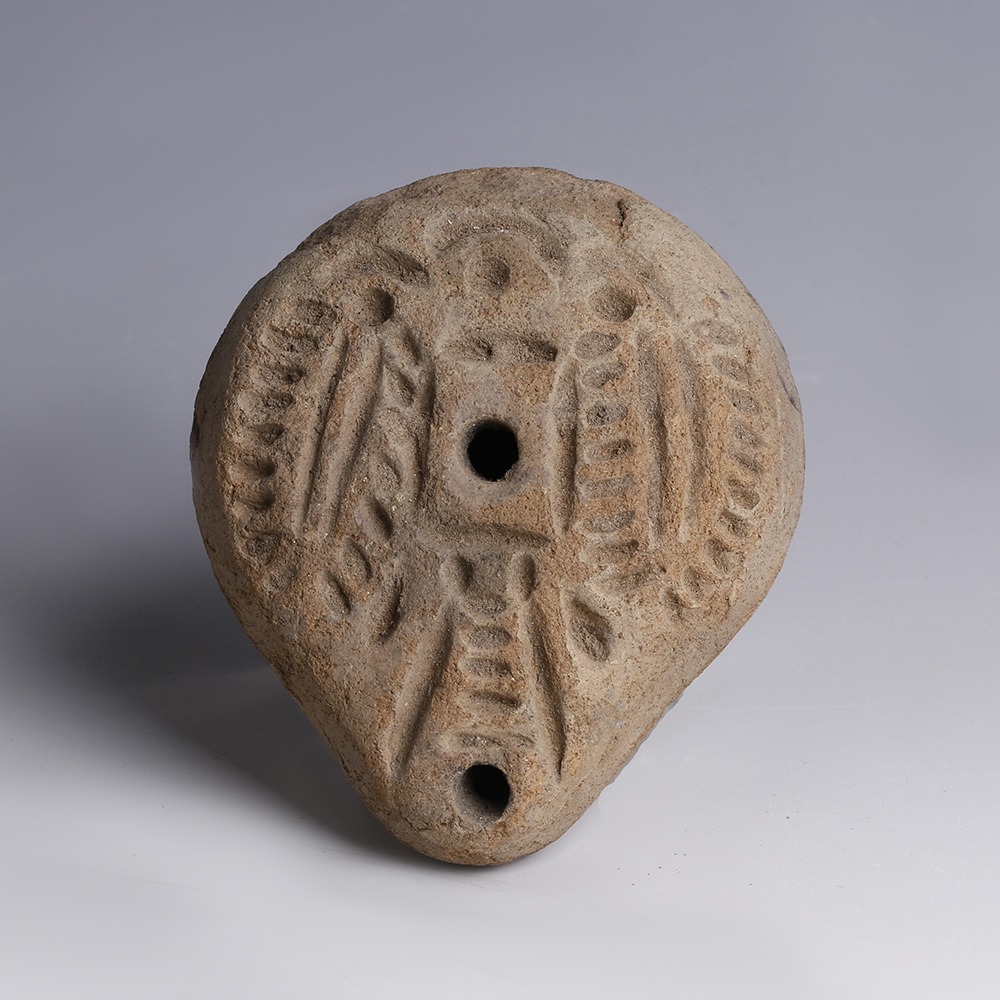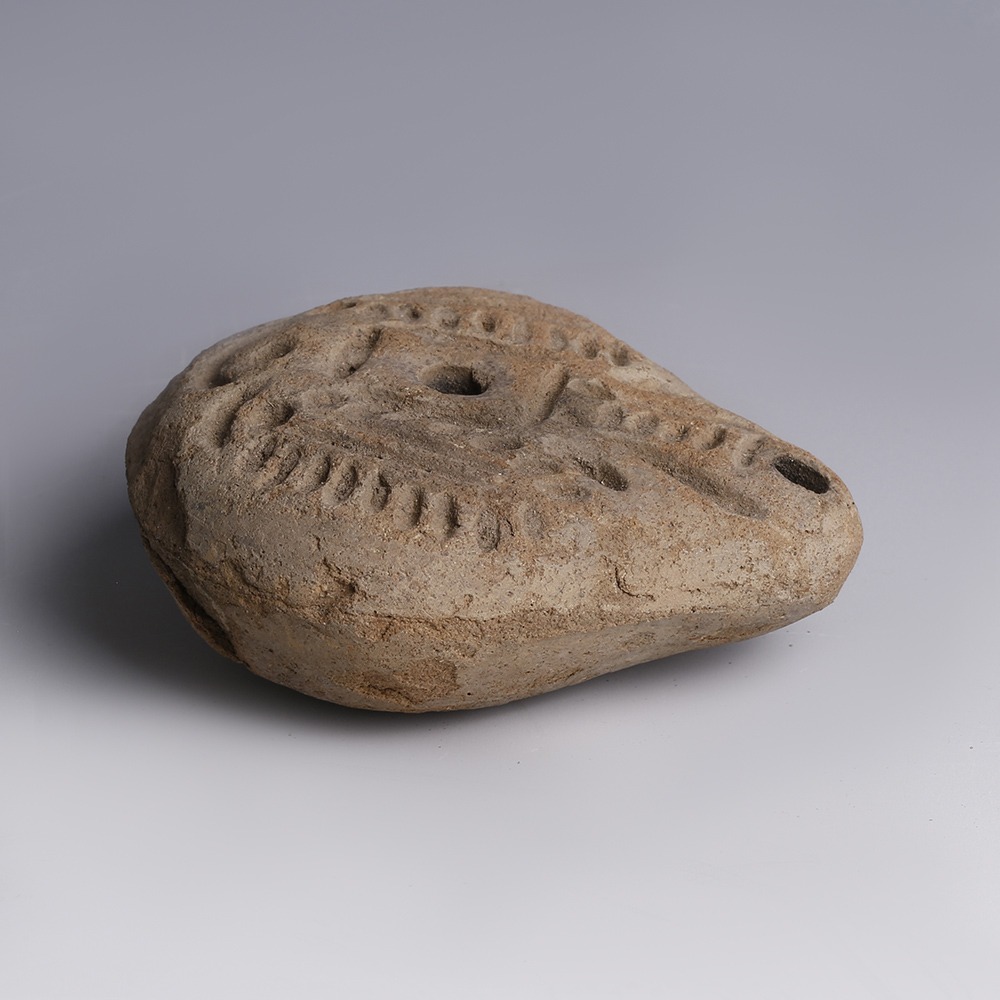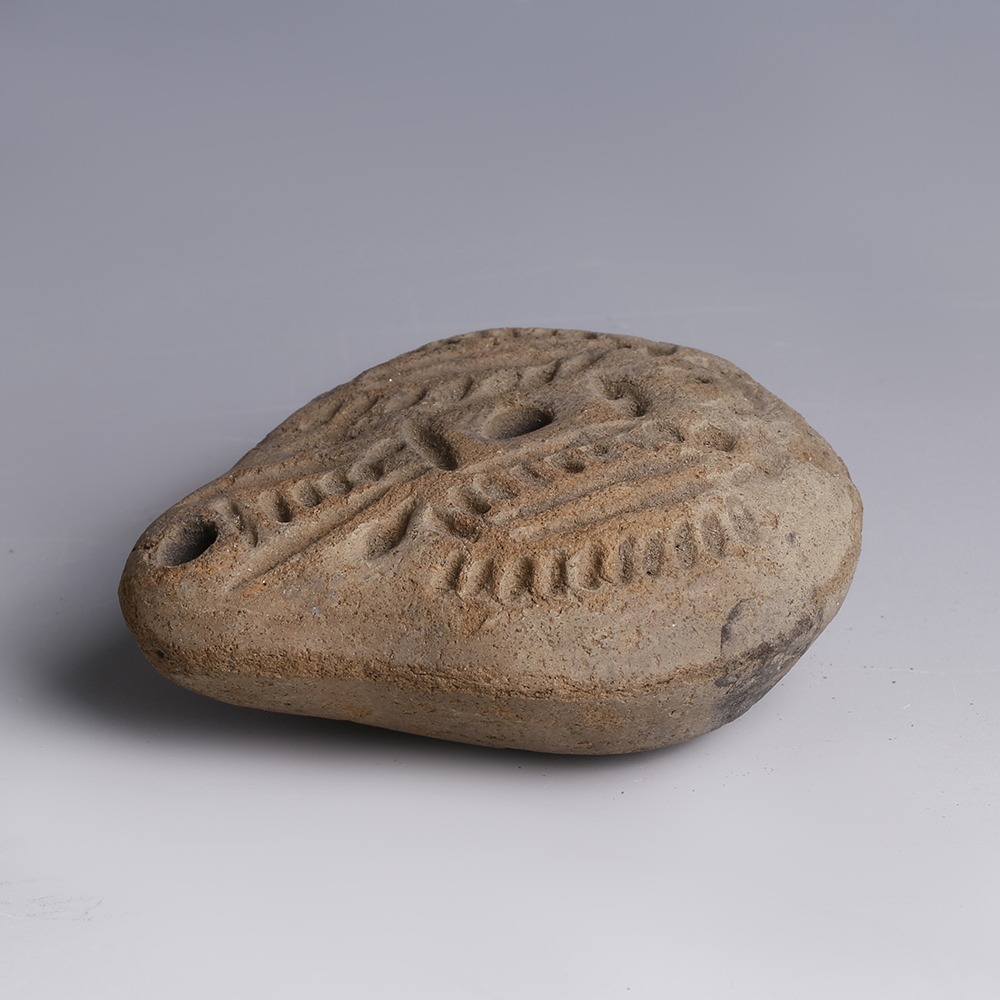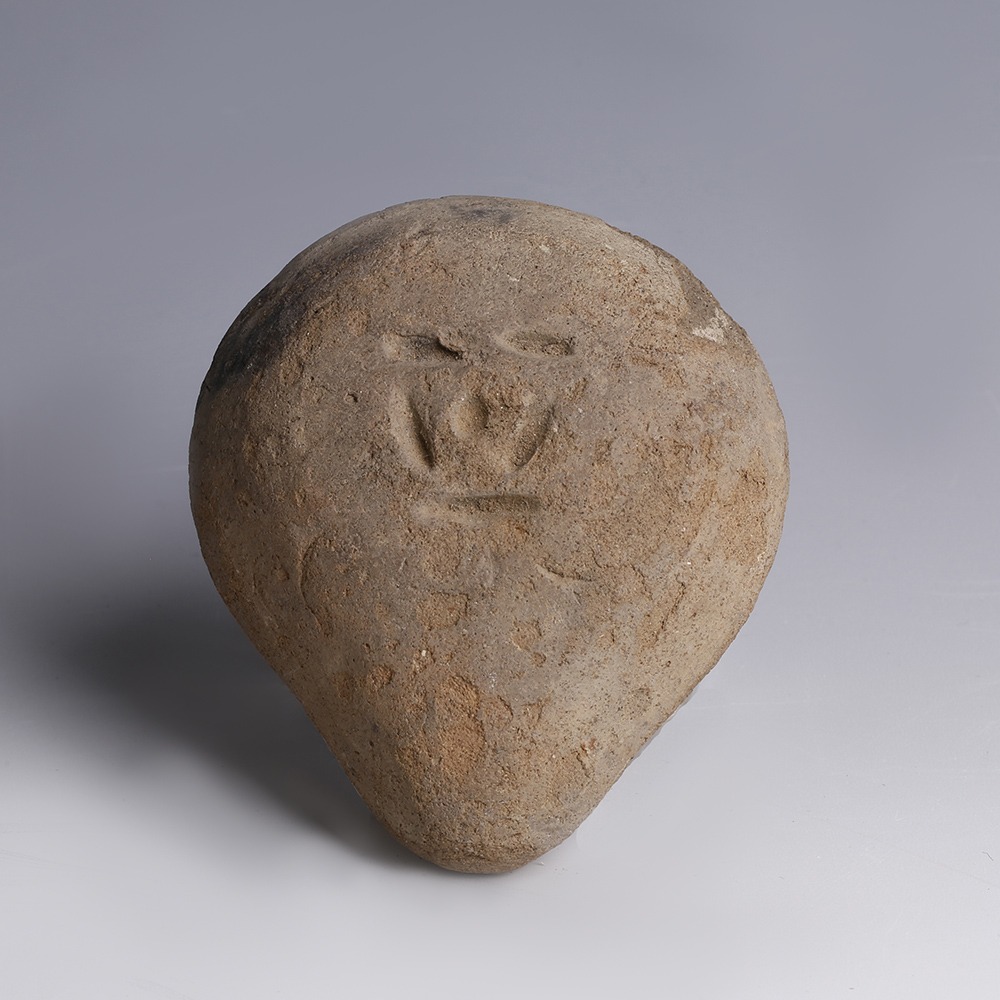The frog was a symbol used in Ancient Egypt to symbolise re-birth. The amphibian was associated with a number of gods, including Ptah – the god of creation. The Ancient Egyptians believed that the frog self-created, emerging from the marshy mud of the Nile as spawn to hatch into tadpoles and later develop into frogs. Frog amulets were thus worn by both the living and the dead. They were placed on mummies to rejuvenate and regenerate, whilst the living wore such amulets to encourage fertility.
Within Egypt’s Coptic Christian period the symbol of the frog continued to be used. It maintained its old association with re-birth. Oil lamps with a frog motif can be found in abundance; the lamp representing the sun and the frog the resurrection [of Christ].



